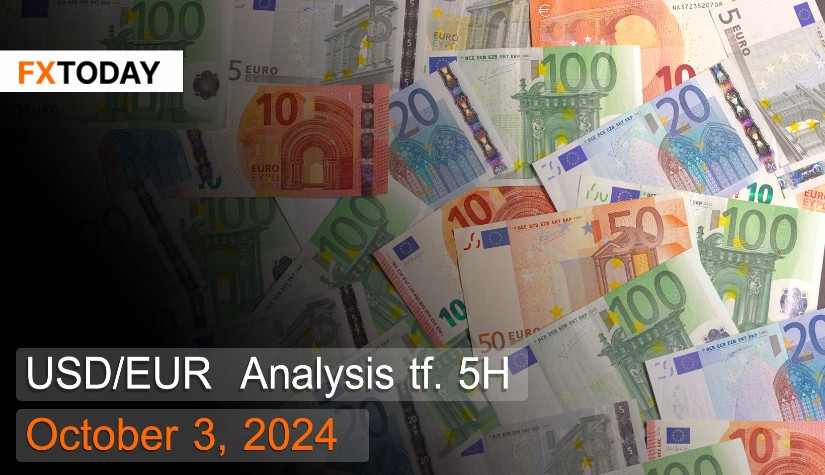Eurozone inflation shows signs of continuous decline.
The euro has slightly weakened following the release of inflation data that came in lower than expected, leading investors to speculate that the European Central Bank (ECB) will further cut interest rates this month. Additionally, the ongoing economic contraction in Germany and France is another crucial factor pushing the ECB to accelerate rate cuts in an effort to stimulate the weakening economy.
Inflation in the eurozone dropped to 1.8% in September 2024, marking the lowest point since 2021, compared to 2.2% in August. This figure has now fallen below the ECB's target of 2%, mainly due to a sharp decline in energy prices, which dropped by over 6%. The inflation rate in the services sector also slowed, while food and beverage prices rose only slightly. Looking at major economies within the eurozone, inflation continued to slow in Germany, France, Italy, and Spain. The ECB has forecasted that inflation could rise again toward the end of 2024, before dropping in early 2025, potentially driven by a rebound in energy prices.
The Eurozone's manufacturing PMI edged up slightly to 45 in September, although this still indicates a contraction in manufacturing activity, which has been ongoing since the beginning of the year. The sharp decline in demand, reflected in fewer new orders, has led to reduced production output. This has also impacted employment, with companies continuing to lay off workers to cut production costs, while prices of goods have begun to rise again.
Economic sentiment in the eurozone dropped slightly to 96.2 in September, reflecting companies' continued pessimism about the economic outlook, particularly in France and Germany. The data also highlights ongoing economic uncertainty due to external factors such as escalating geopolitical tensions, increasing conflicts in the Middle East, and continued weakening demand. Meanwhile, reduced household spending power has led to declining corporate profits.
Unemployment in the eurozone remained steady at 6.4% in August, in line with past tightening monetary policies. However, recent ECB interest rate cuts have helped slightly boost the labor market, with 94,000 fewer unemployed people compared to the previous month. Youth unemployment, for those under 25, fell to 14.1%. Spain, Greece, and Sweden continue to have the highest unemployment rates.
Techical analysis data (5H)
Resistance: 0.9087, 0.9092, 0.9102
Source: Investing.com
Buy/Long 1: If the price touches support in the price range of 0.9062 - 0.9071 but cannot break the support at 0.9071, you may set a TP at approximately 0.9092 and SL at around 0.9056 or according to your acceptable risk.
Buy/Long 2: If the price breaks the resistance in the price range of 0.9087 - 0.9092, you may set a TP at approximately 0.9102 and SL at around 0.9062 or according to your acceptable risk.
Sell/Short 1: If the price touches resistance in the price range of 0.9087 - 0.9092 but cannot break the resistance at 0.9087, you may set a TP at approximately 0.9062 and SL at around 0.9102 or according to your acceptable risk.
Sell/Short 2: If the price breaks the support in the price range of 0.9062 - 0.9071, you may set a TP at approximately 0.9056 and SL at around 0.9092 or according to your acceptable risk.
Pivot point October 3, 2024 10:09 PM. GMT+7
|
Name
|
S3
|
S2
|
S1
|
Pivot Points
|
R1
|
R2
|
R3
|
| Classic | 0.9056 | 0.9062 | 0.9071 | 0.9077 | 0.9087 | 0.9092 | 0.9102 |
| Fibonacci | 0.9062 | 0.9067 | 0.9071 | 0.9077 | 0.9083 | 0.9087 | 0.9092 |
| Camarilla | 0.9076 | 0.9078 | 0.9079 | 0.9077 | 0.9082 | 0.9083 | 0.9085 |
| Woodie's | 0.9058 | 0.9063 | 0.9073 | 0.9078 | 0.9089 | 0.9093 | 0.9104 |
| DeMark's | - | - | 0.9074 | 0.9078 | 0.9089 | - | - |
















